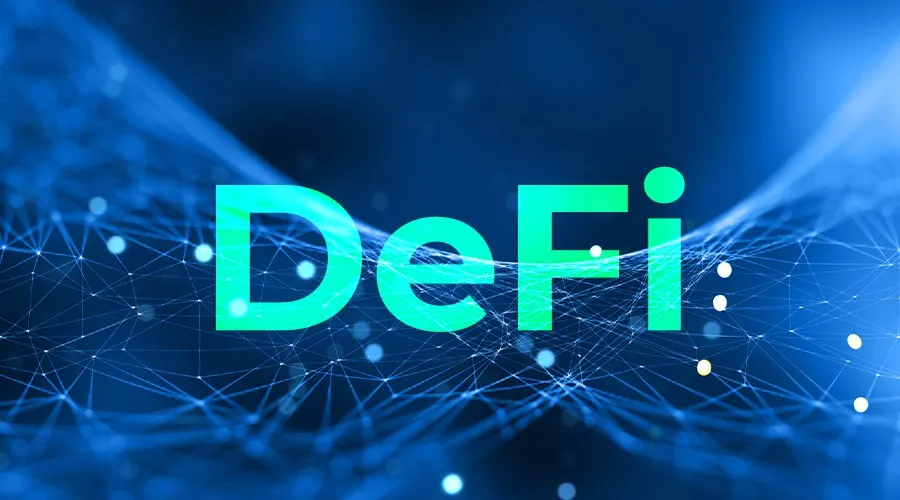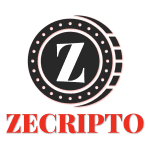
DeFi (Decentralized Finance) governance refers to the process by which decisions are made within decentralized finance protocols. Unlike traditional finance, where decisions are made by centralized institutions and individuals, DeFi governance relies on a decentralized system that allows anyone to participate in decision-making processes.
There are several methods of DeFi governance, including on-chain and off-chain governance, with each having its own advantages and disadvantages. In this article, we will explore the different methods of DeFi governance and how decisions are made within these systems.
On-Chain Governance
On-chain governance refers to decision-making processes that take place on the blockchain. This means that all participants in the DeFi protocol can vote on proposed changes to the system using their digital wallets.
One of the main advantages of on-chain governance is that it is transparent and decentralized. All participants have an equal say in decision-making, and the results of votes are publicly available on the blockchain. This makes it difficult for any single party to manipulate the system, ensuring a fair and equitable decision-making process.
Another advantage of on-chain governance is that it is quick and efficient. Because all participants can vote directly on the blockchain, there is no need for intermediaries or third-party organizations to oversee the decision-making process. This can lead to faster decision-making and implementation of changes within the protocol.
However, on-chain governance also has some disadvantages. One of the main challenges is that it can be difficult to achieve a quorum (the minimum number of votes required for a decision to be valid) with a decentralized system. Additionally, the costs associated with voting on the blockchain can be high, as participants must pay transaction fees for each vote.
Off-Chain Governance
Off-chain governance refers to decision-making processes that take place outside of the blockchain. This can include forums, chat rooms, or other communication channels where participants can discuss proposed changes to the DeFi protocol.
One advantage of off-chain governance is that it can be more flexible and adaptable than on-chain governance. Because decisions are not restricted by the limitations of the blockchain, participants can discuss and modify proposals more freely. This can lead to more creative and innovative solutions to complex problems within the DeFi protocol.
Another advantage of off-chain governance is that it can be more inclusive. Because participants do not need to have access to a digital wallet or understand the technical aspects of blockchain technology, off-chain governance can be more accessible to a wider range of individuals.
However, off-chain governance also has some disadvantages. One of the main challenges is that it can be difficult to ensure that all participants have an equal say in decision-making. Additionally, off-chain governance can be less transparent than on-chain governance, as decisions are made behind closed doors.
Hybrid Governance
Many DeFi protocols use a hybrid governance model, which combines elements of both on-chain and off-chain governance. This allows the protocol to take advantage of the strengths of both systems while minimizing their weaknesses.
In a hybrid governance model, important decisions such as changes to the protocol’s code or treasury management may be made using on-chain governance, while less critical decisions such as marketing or branding may be made using off-chain governance. This allows the protocol to maintain a balance between transparency, efficiency, and inclusivity while ensuring that critical decisions are made in a fair and decentralized manner.
Types of Voting Mechanisms
Within on-chain governance, there are different types of voting mechanisms that can be used. The most common types are:
- Token-weighted voting: This method gives more voting power to participants who hold more tokens within the DeFi protocol. The idea behind token-weighted voting is that those with a larger stake in the protocol have a greater interest in its success and are therefore more likely to make informed decisions.
- Quadratic voting: This method allows participants to cast multiple votes but at a decreasing rate. This means that the first vote counts for more than the second, the second for more than the third, and so on. Quadratic voting is designed to prevent a small group of participants from dominating decision-making processes.
- Futarchy: This method involves using prediction markets to determine the outcome of a proposed change to the protocol. Participants can buy and sell prediction market tokens to indicate their beliefs about the success of a proposed change. If the market predicts that the change will be successful, it is implemented. Futarchy is designed to incentivize participants to make accurate predictions about the future performance of the protocol.
Challenges in DeFi Governance
Despite the benefits of DeFi governance, there are several challenges that must be addressed. These include:
- Sybil attacks: A Sybil attack is when an attacker creates multiple fake identities to manipulate the outcome of a vote. This can be a problem in decentralized systems where anyone can participate in decision-making processes.
- Voter apathy: In any voting system, there is a risk that participants may not vote at all. This can be particularly problematic in decentralized systems where there is no central authority to enforce a quorum.
- Coordination problems: Decentralized decision-making can be challenging when there are many participants with differing opinions. Without a clear leader or authority to enforce decisions, it can be difficult to reach consensus on important issues.
- Forking: Forking occurs when a group of participants in a DeFi protocol disagree with a proposed change and decide to create a new version of the protocol. While forking can be a useful way to resolve disagreements, it can also lead to fragmentation and confusion within the ecosystem.
Examples of DeFi Governance
Here are a few examples of DeFi projects and their governance mechanisms:
- Uniswap: Uniswap is a decentralized exchange (DEX) protocol that allows users to trade cryptocurrencies without a centralized authority. Uniswap’s governance token, UNI, gives holders voting rights on changes to the protocol. Token holders can submit proposals for changes to the protocol, and voting takes place over a two-day period. Proposals need to reach a quorum of 40 million votes to pass.
- MakerDAO: MakerDAO is a decentralized lending platform that allows users to borrow the stablecoin DAI using collateral in the form of other cryptocurrencies. MakerDAO’s governance token, MKR, gives holders voting rights on changes to the protocol, including changes to interest rates and collateral requirements. MKR holders can also participate in debt auctions, which help to maintain the stability of the DAI stablecoin.
- Compound: Compound is a lending and borrowing platform that allows users to earn interest on their cryptocurrency holdings. Compound’s governance token, COMP, gives holders voting rights on changes to the protocol, including changes to interest rates and reserve requirements. COMP holders can also participate in proposing changes to the protocol.
- Aave: Aave is a lending and borrowing platform that allows users to earn interest on their cryptocurrency holdings. Aave’s governance token, AAVE, gives holders voting rights on changes to the protocol, including changes to interest rates and reserve requirements. AAVE holders can also participate in proposing changes to the protocol.
Conclusion
DeFi governance is a critical aspect of the decentralized finance ecosystem. It allows participants to have a say in the development and management of DeFi protocols, creating a more democratic and equitable financial system. While there are challenges to decentralized decision-making, the benefits of DeFi governance outweigh the risks. As the DeFi ecosystem continues to grow and evolve, new governance models and mechanisms will be developed to meet the needs of its participants.
I’m a highly experienced and well-respected author in the field of cryptocurrency. I have been writing about Bitcoin, Ethereum, and other digital assets for over 5 years. In addition to my career as an author, I’m also a highly sought-after keynote speaker and consultant on all things crypto and I’m passionate about helping people understand this complex and often misunderstood industry.
